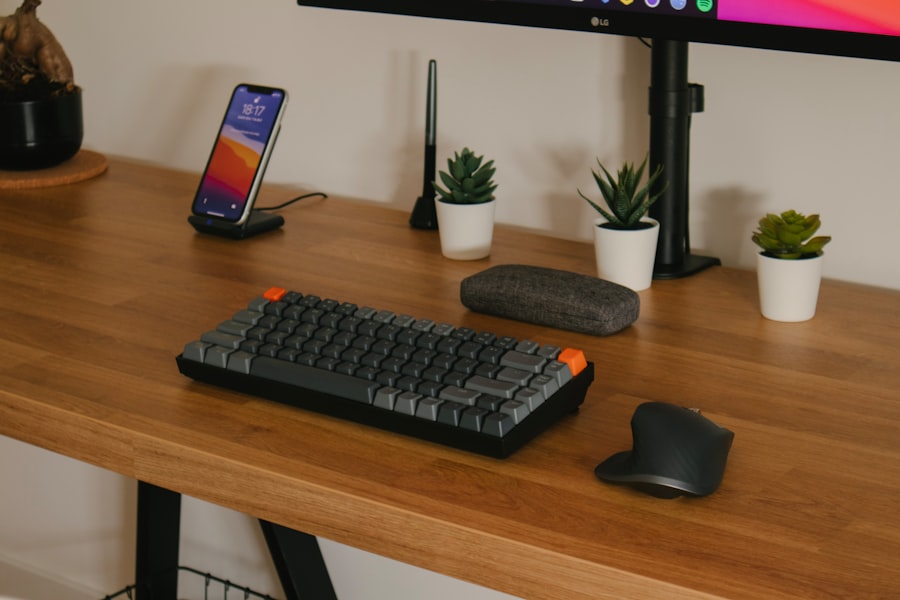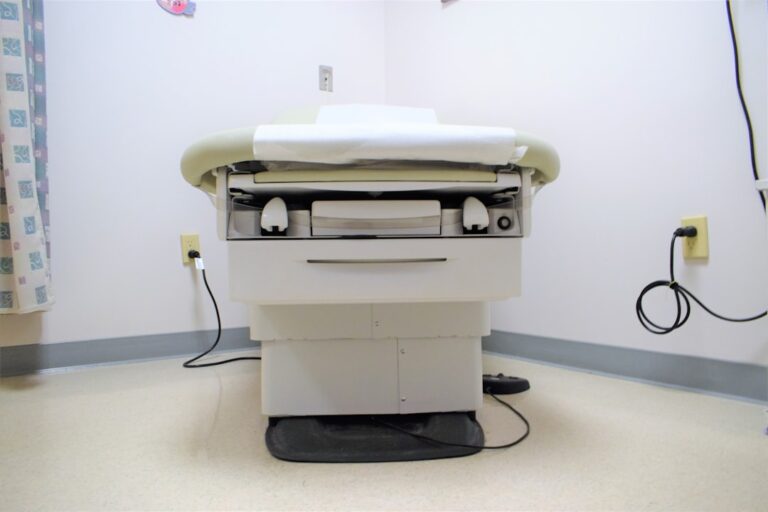The modern workplace has evolved significantly, with many individuals spending the majority of their day seated at a desk. This sedentary lifestyle can lead to a myriad of health issues, both physical and mental. Prolonged sitting has been linked to an increased risk of obesity, cardiovascular disease, and type 2 diabetes.
The human body is designed for movement, and when it is confined to a chair for extended periods, it can lead to muscle atrophy, poor circulation, and a host of musculoskeletal problems. The spine, in particular, bears the brunt of this lifestyle, as poor posture and lack of movement can result in chronic back pain and discomfort. Moreover, the effects of a desk job extend beyond physical health.
Mental well-being can also suffer due to the lack of movement and the often monotonous nature of desk work. Studies have shown that sedentary behavior is associated with increased levels of anxiety and depression. The brain requires regular physical activity to function optimally; movement stimulates the release of endorphins and other neurotransmitters that enhance mood and cognitive function.
Therefore, understanding the implications of a desk job on both the body and mind is crucial for developing strategies to mitigate these negative effects.
Simple exercises to counteract the negative effects of sitting all day
Incorporating simple exercises into your daily routine can significantly counteract the adverse effects of prolonged sitting. One effective approach is to perform short bursts of activity throughout the day. For instance, standing up every 30 minutes to do a set of calf raises or squats can help stimulate blood flow and engage the muscles that may become dormant while sitting.
These exercises require minimal space and can be done discreetly in an office environment, making them accessible for most individuals. Another beneficial exercise is the seated leg extension. While sitting at your desk, extend one leg out straight and hold for a few seconds before lowering it back down.
This exercise not only engages the quadriceps but also promotes circulation in the legs. Additionally, incorporating shoulder rolls and neck stretches can alleviate tension that builds up from poor posture and prolonged sitting. These simple movements can be performed in just a few minutes and can make a significant difference in how one feels throughout the workday.
Incorporating movement into your daily routine at work

To combat the sedentary nature of a desk job, it is essential to find ways to incorporate movement into your daily routine actively. One effective strategy is to schedule regular breaks throughout the day. Setting a timer for every hour to remind yourself to stand up, stretch, or take a short walk can help break up long periods of sitting.
Even a brief five-minute walk around the office or outside can refresh your mind and body, enhancing productivity and focus. Another practical approach is to utilize technology to your advantage. Many fitness trackers and smartphone apps are designed to encourage movement by sending reminders to stand or move after prolonged periods of inactivity.
Additionally, consider opting for walking meetings instead of traditional sit-down discussions. This not only promotes physical activity but can also foster creativity and collaboration among team members. By consciously integrating movement into your workday, you can create a more dynamic and health-conscious environment.
Strengthening exercises for the back and core muscles
| Exercise | Repetitions | Sets | Rest |
|---|---|---|---|
| Plank | 30 seconds | 3 | 30 seconds |
| Superman | 12 | 3 | 30 seconds |
| Bird Dog | 10 each side | 3 | 30 seconds |
| Deadlift | 10 | 3 | 1 minute |
Strengthening exercises targeting the back and core muscles are vital for individuals with desk jobs, as they help counteract the negative effects of prolonged sitting. A strong core supports proper posture and spinal alignment, reducing the risk of back pain. One effective exercise is the plank, which engages multiple muscle groups simultaneously.
To perform a plank, position yourself face down on the floor, resting on your forearms and toes while keeping your body in a straight line from head to heels. Hold this position for 20-30 seconds, gradually increasing the duration as your strength improves. Another excellent exercise for strengthening the back is the bird-dog.
Start on all fours with your hands directly under your shoulders and knees under your hips. Extend one arm forward while simultaneously extending the opposite leg backward, keeping your hips level. Hold for a few seconds before returning to the starting position and switching sides.
This exercise not only strengthens the back but also enhances balance and coordination. Incorporating these strengthening exercises into your routine can significantly improve overall stability and reduce discomfort associated with a sedentary lifestyle.
Stretching exercises to improve flexibility and reduce stiffness
Stretching exercises play a crucial role in improving flexibility and reducing stiffness that often accompanies long hours spent at a desk. Regular stretching helps maintain muscle elasticity and joint mobility, which are essential for overall physical health. One effective stretch is the seated forward bend, which targets the hamstrings and lower back.
While seated at your desk, extend your legs straight in front of you and reach toward your toes, holding the stretch for 15-30 seconds. This simple movement can alleviate tension in the lower back and promote relaxation. Another beneficial stretch is the chest opener, which counteracts the forward hunch that often occurs from prolonged sitting.
Stand up and clasp your hands behind your back while straightening your arms. Gently pull your shoulders back and down while lifting your chest toward the ceiling. Hold this position for 15-30 seconds to stretch the chest and shoulder muscles effectively.
Incorporating these stretching exercises into your daily routine can help maintain flexibility, reduce stiffness, and promote overall well-being.
Cardiovascular exercises to combat the sedentary nature of a desk job

Cardiovascular exercises are essential for combating the sedentary nature of a desk job, as they promote heart health and overall fitness levels. Engaging in regular aerobic activity helps improve circulation, boost energy levels, and enhance mood through the release of endorphins. One effective way to incorporate cardiovascular exercise into your routine is by utilizing your lunch break for brisk walking or jogging around your workplace or nearby park.
Even a 20-30 minute walk can provide significant cardiovascular benefits while allowing you to clear your mind. Additionally, consider using stairs instead of elevators whenever possible. Climbing stairs is an excellent way to elevate your heart rate while also strengthening your leg muscles.
If you have access to a stationary bike or treadmill at work, consider using them during breaks or while catching up on emails or phone calls. These activities not only provide cardiovascular benefits but also help break up long periods of sitting, contributing to improved overall health.
Tips for maintaining good posture and ergonomics at your desk
Maintaining good posture and ergonomics at your desk is crucial for preventing discomfort and long-term health issues associated with prolonged sitting. Start by ensuring that your chair provides adequate lumbar support; this helps maintain the natural curve of your spine while seated. Adjusting your chair height so that your feet rest flat on the floor or on a footrest can also promote better posture.
The positioning of your computer monitor is equally important; it should be at eye level to prevent straining your neck while looking down or up at the screen. Your keyboard should be positioned so that your elbows remain at a 90-degree angle while typing, reducing strain on your wrists and forearms. Additionally, consider using an ergonomic mouse that fits comfortably in your hand to minimize wrist strain during use.
By implementing these ergonomic principles, you can create a workspace that supports good posture and reduces discomfort associated with long hours spent at a desk.
Creating a balanced exercise routine to reverse the damage of a desk job
To effectively reverse the damage caused by a desk job, it is essential to create a balanced exercise routine that incorporates strength training, cardiovascular activity, flexibility work, and proper ergonomics. Aim for at least 150 minutes of moderate-intensity aerobic activity each week, combined with two or more days of strength training targeting major muscle groups. This balanced approach not only helps mitigate the negative effects of prolonged sitting but also promotes overall health and well-being.
In addition to structured workouts, consider integrating physical activity into daily life by opting for active transportation methods such as biking or walking instead of driving short distances. Engaging in recreational activities like dancing or hiking on weekends can also provide enjoyable ways to stay active while breaking away from sedentary habits. By prioritizing movement in various aspects of life, individuals can create a sustainable exercise routine that effectively counters the adverse effects associated with desk jobs while enhancing overall quality of life.
FAQs
What are the effects of a desk job on the body?
Sitting at a desk for long periods of time can lead to a variety of health issues, including poor posture, tight muscles, weakened core muscles, and increased risk of chronic diseases such as obesity, diabetes, and heart disease.
What are some simple exercises to reverse desk job damage?
Some simple exercises to reverse the damage caused by a desk job include stretching the hip flexors, strengthening the core muscles, improving posture through back and shoulder exercises, and incorporating regular movement breaks throughout the day.
How often should I do these exercises?
It is recommended to incorporate these exercises into your daily routine, aiming for at least 30 minutes of physical activity most days of the week. Additionally, taking short movement breaks every hour during the workday can help counteract the negative effects of prolonged sitting.
Are there any other lifestyle changes that can help reverse desk job damage?
In addition to regular exercise, other lifestyle changes such as using a standing desk, taking the stairs instead of the elevator, and incorporating more movement into daily activities can also help reverse the damage caused by a desk job.
Can these exercises prevent future desk job damage?
Yes, incorporating these exercises into your routine can help prevent future desk job damage by improving posture, strengthening muscles, and reducing the negative effects of prolonged sitting. However, it is important to also maintain a balanced and active lifestyle outside of work.











